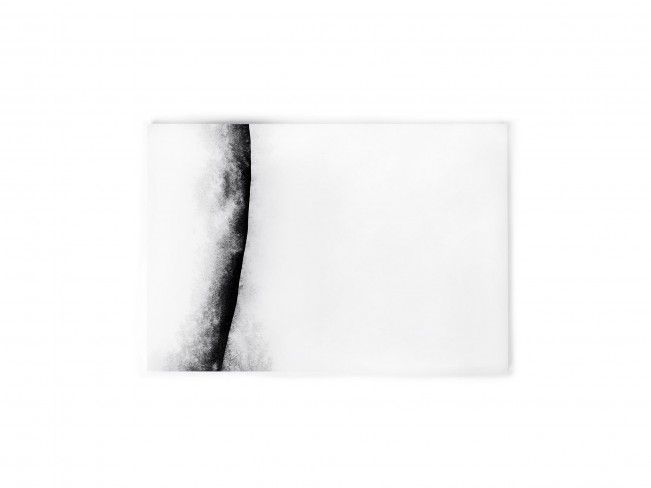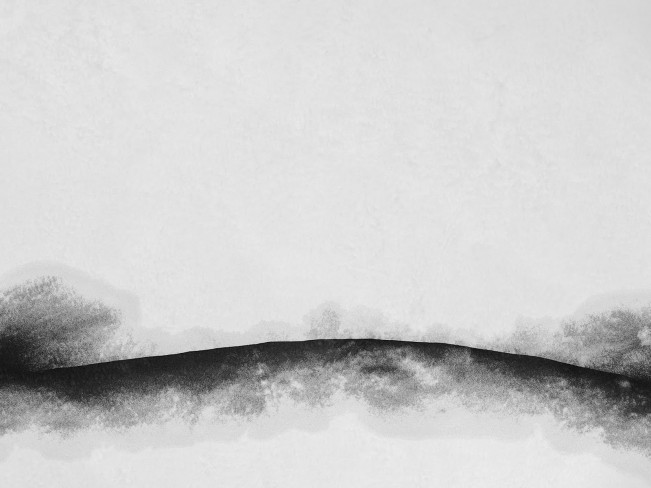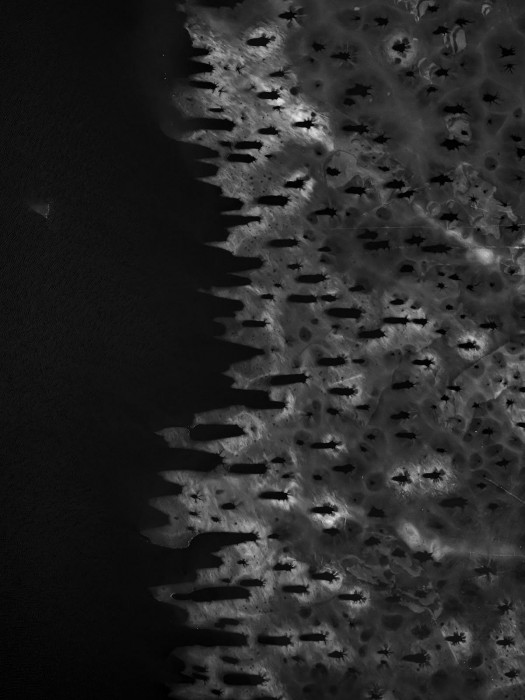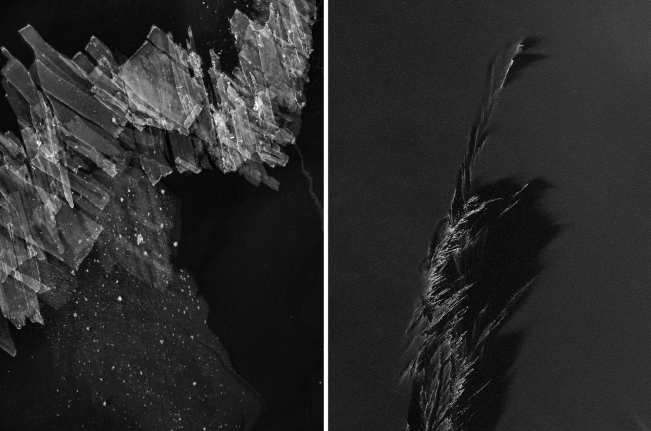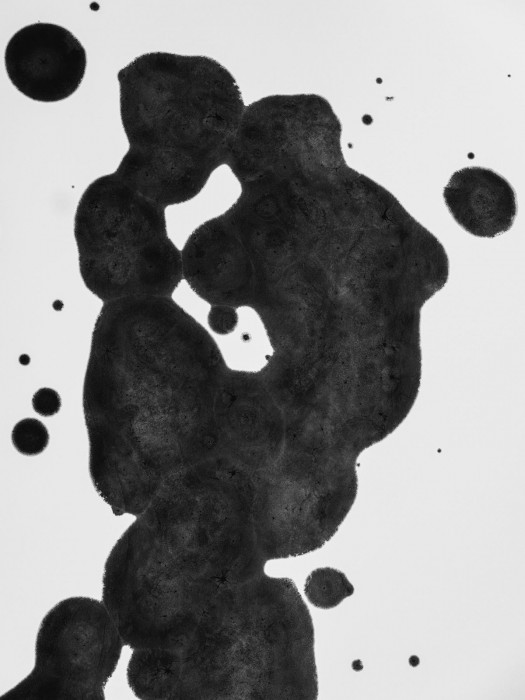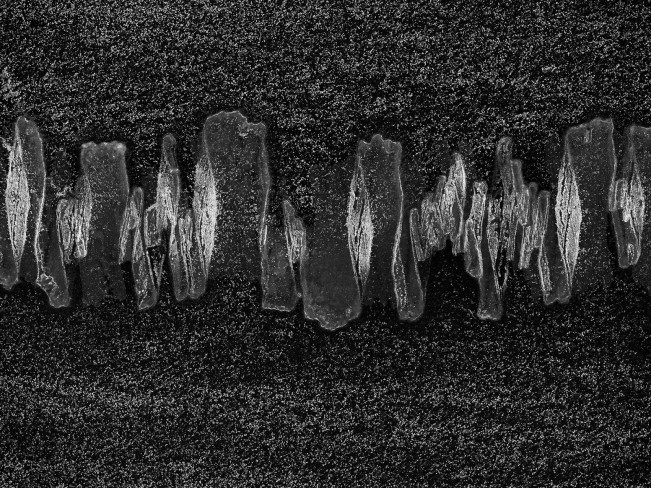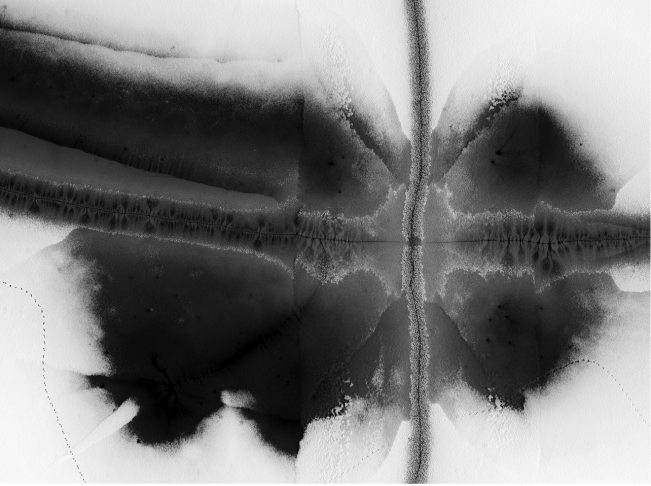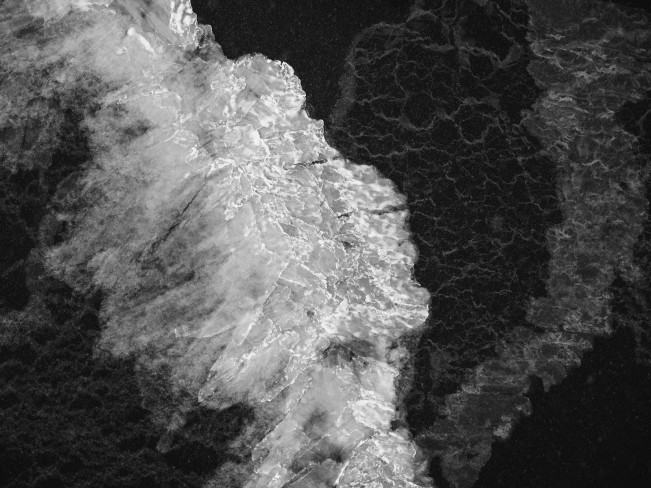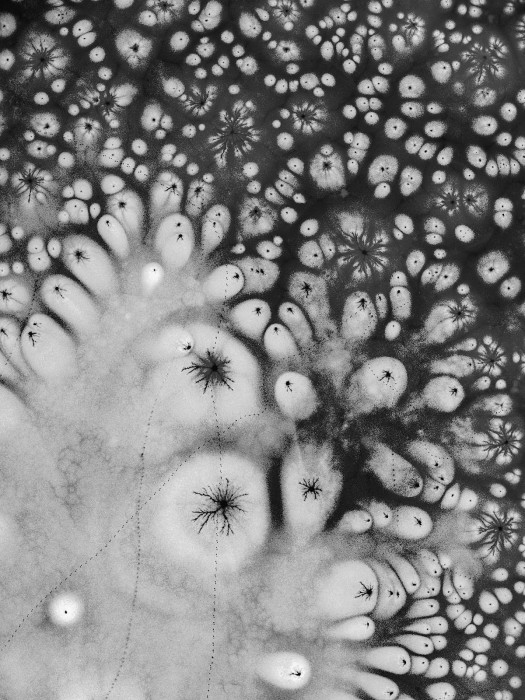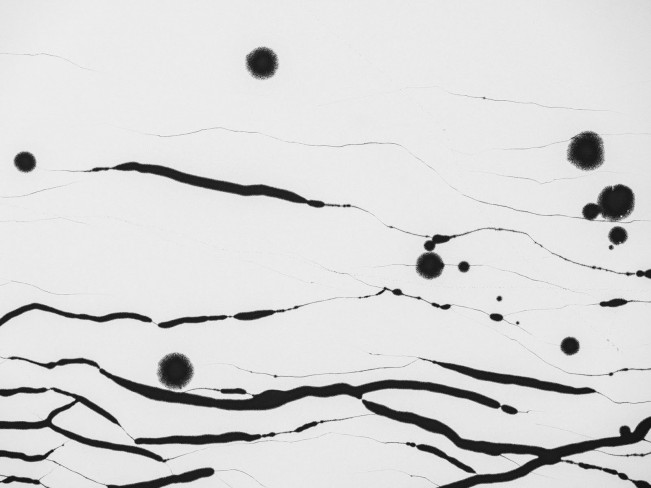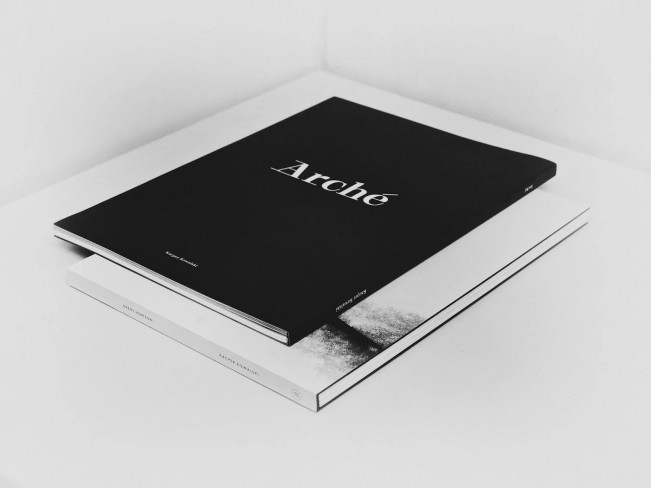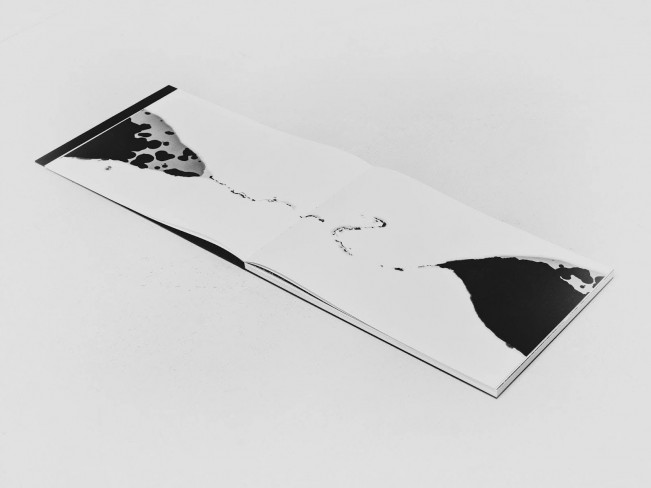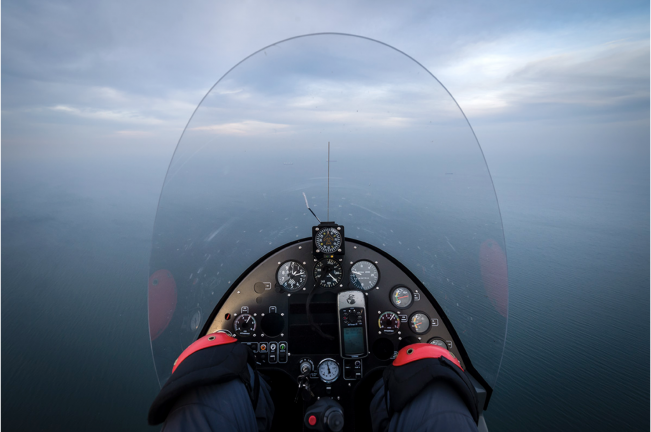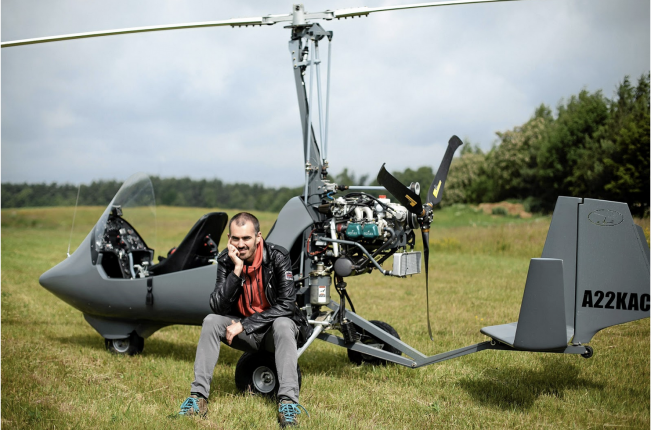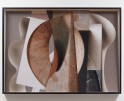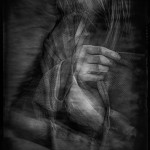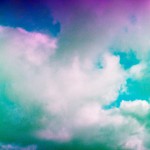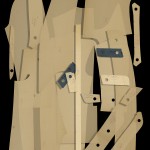European Week: Kacper Kowalski
Guest Editor and German photographer Melanie Schoeniger shares a week of European photographers whose work she finds inspiring. Schoeniger’s sensibility is translated through the work she shares; all the photographer’s work has a sense of mystery, interconnectedness and wonder. Schoeniger states:
When I first opened my copy of Kacper Kowalski ’s photobook Event Horizon with its mysterious white cover that brings to mind images from outer space, possibly showing a part of a planet or a moon in a seductive aesthetic recalling Japanese aesthetics of raw brushstrokes, dark ink spreading over and sinking into fiber paper – I was not prepared for that deeply moving sensitive experience, that overwhelming feeling that carried me away ever since when leafing through this treasure.
Personally, I am attracted to the Micro/Macro Cosmos aspect of this work and its abstract quality creating space for imagination simultaneously freeing and challenging the mind.
Someone not knowing anything about where and how these photographs have been taken, can only guess if this is the look through a microscope, details of a structure or a painting, or the view from far above ( which it is). Through its scale the familiar is rendered into mysterious yet recognizable arrangements. Traces and spaces meet and merge into a marvelous otherworldly compositions.
This informs my feeling of the creative life energy as an underlying current and visual pattern; stardust playing with Entropy and Fibonacci. To me this work is an ephemeral and powerful allegory on life unfolding within this universe. And reminding us of the wonder that we are surrounded with and that we are part of.
Kacper combines his two passions – photography and flying – to create aerial masterpieces of a spiritual dimension. I conceive him as a modern Daedalos.
Enjoy a sequence of images from two series and books created by Kacper published by 1605 Collective, available as Combo: Event Horizon (IPA winner!) and Arché. “Event Horizon functions separately as well as complements his previous book, Arché. Both projects were created in similar locations and physical conditions. They are connected like yin and yang, and despite their similarity, they are very distinct at the meta-level. Kowalski approached Event Horizon with a different mindset and underwent deeper, more spiritual life experiences in the process of making the desired photographs in the frozen landscapes.”
About “Event Horizon”:
At the start of winter I set out on a journey in search of harmony. Driven by instinct, I ventured further and further until I passed the boundaries of rationality. Whether it was fog or snow, frost or thaw, I took to the sky to see if it was possible to fly. When I could, I flew over frozen bodies of water, fascinated by their icy forms.
I allowed instinct to take over, like a bird taking off from its nest.
In astrophysics, an event horizon is the border of space-time beyond which the escape speed of any object and wave exceeds the speed of light in a vacuum. No object – not even light emitted from the horizon – is able to leave this area. Everything that passes the event horizon from the observer’s side disappears.
I was flying into the dark, thinking of all the situations in which we call to the power of the supernatural world. Why do we share them in our collective imagination? How were they created? Was it out of fascination with the outside world, or were the supernatural world’s features used to convey inner emotions?
Carl Jung defined the concept of an archetype as a mechanism that is written in the collective unconscious. We all initially have the same archetypes, but each of us ‘tags’ them differently over the years, so when we read them we create different meanings.
I’m fascinated by the human cognitive apparatus; the brain with two hemispheres. They function together, and separately inform each other’s conclusions with the help of the corpus callosum. The mind is a mystery – perhaps undiscoverable – like the inside of the black hole behind the event horizon.
-Kacper
Read about how Kacper describes his process of creation and how he finds freedom of mind in this meditative practice:
“Before takeoff, I go through a ritual. I unfold the wing, warm up the engine, check the equipment, the fuel level, the springs, the cables and the hundred thousand things on the checklist. I put on my flight suit, helmet and gloves. I watch the clouds and the birds flying by. I look up at the smoke from the chimney to see the wind, but I also follow how the gusts of wind move the branches, leaves and grasses in the meadows. I enjoy the sun on my face. I concentrate more and more. I choose the moment to take off, take a deep breath and fly away. I pull my wings up over my head, throttle up, and run as fast as I can, making sure not to stumble and to stay on course on the wind. At some point I break free of the ground. I am flooded with joy.
Flying is not just a physical experience, but a real experience of the here and now. Something happens to consciousness during it. From the distance of time, in the safety of the ground, it is impossible to reconstruct the course of what happened up there. Perhaps this is what abstraction is all about. In the reality of the world around me, I perceive emanations of thoughts, feelings, concepts, impressions. Impressions that I cannot write down. They are recorded in the photographic image that is created. I know that for sure. It’s a paradox because the image itself is a very real piece of reality, a fragment of the landscape that is what it is. I wonder if adding a description from a distance to a photograph created in this way can be real?
100 years ago, Antoine de Saint-Exupéry said: I fly because it frees my mind from the tyranny of petty things.
My paraphrase is: I fly because it frees me from the tyranny of the mind.”
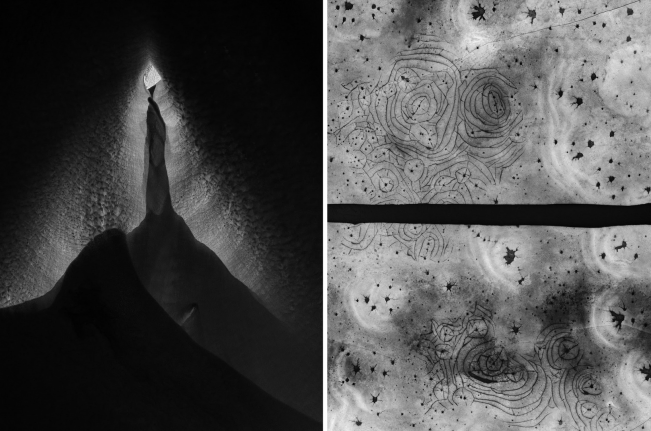
©Kacper Kowalski, composition no 060 from Arché project, Poland, 2020 ©Kacper Kowalski, composition no 526, from Event Horizon project, Poland 2021
About “Arché”:
At first photographs for Arché were taken for three winter seasons since 2016/17, however the last winter was warm in Poland, The lakes and rivers did not freeze. “I devoted my attention to the Vistula, the last big wild river in this part of Europe, which is gradually and systematically drying up. The project becomes a quiet reminder of the essential connection between humans and their natural surroundings.
What Only Birds and Gods Could See
Kacper brings many questions, in his newest work it seems like he is digging deeper where nature, snow, water and wildlife make forms that few of us have seen. At first his photos are strangely familiar. You look in your mind for comparison, almost like Japanese ink art, or modernistic forms of minimalism on paper, but still like ancient magic signs or cave paintings, when looking closer, understanding this is nature, we are suddenly connected with some place in our minds, connected to memories from times when understanding these footprints and forms in nature was vital for survival. From times when mythology was born, before the time of writing, maybe even before language”, writes award-winning Icelandic writer, essayist, and environmentalist, Andri Snaer Magnasson, in the introduction to the book.
“These images are part of a project about prehistoric times, when tradition, culture and meanings were interwoven in people’s collective imagination. When myth and reality were interconnected and when symbols and motifs were passed on through oral tradition. This is the foundation of human civilization, whether we realise it or not”, says Kowalski.
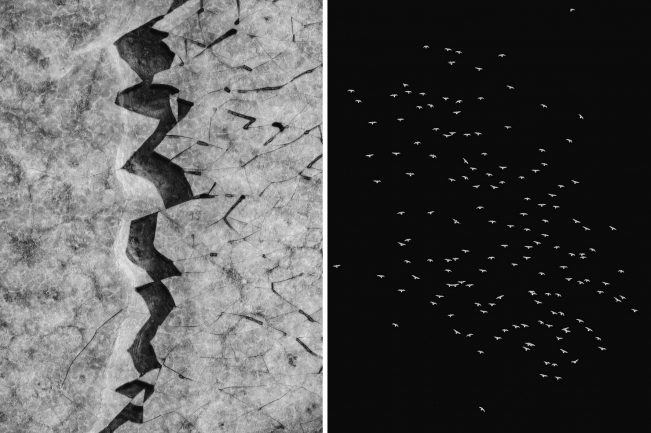
©Kacper Kowalski, composition no 209 from Event Horizon project, Poland 2021 ©Kacper Kowalski, composition no 053, from Arché project, Poland, 2018
Kacper shares the creation story of his two books, “Arché” and “Event Horizon”:
I self-published the Arche photo book. It was a long way of several years working on the concept. Together with Ania Nałęcka Milach, an amazing designer from Poland, we worked on the object of the book. Ania’s maxim is that as a designer she wants to be invisible in the book. She dives deep into the process, all the decisions, the paper, the format, the rhythm of the book, the layout are there to convey the essence of the work in an object like a book through all the means of expression. It was a deep process. And I entered another creative process at the end of it, when I began to fly to the next part, into the darkness, beyond the metaphorical point of no return. To the Event Horizon.
And here it was a wonderful experience to work with the Dutch publisher 1605, founded by Bastiaan Woudt. It was an incredible privilege for me to be able to separate myself from my own emotions and participate in the process as designer Janneke Schrey interpreted the second part of the story with Bastiaan, taking the burden of the experience off me and making both books even more accessible and coherent.
Both processes took place in collaboration with the chief curator, Wiktoria Michałkiewicz. It’s very important for me to mention the people I’m privileged to work with. In the air I am alone, while I experience everything that is, in a way, indescribable in words, but in the language of images. I return to earth with them and have the great pleasure of working with people who, together with me, try to understand this human experience and translate it into a universal language, adding another brick to the collection of stories of human experience. There is also freedom and openness in this process. I am curious about the end result, the expansion of the experience, the photographs and the book becoming a contribution to further reflection. The process is alive and malleable.
Kacper Kowalski (b. 1977, Poland) has been observing and photographing landscapes from aerial perspective for over 25 years. After becoming an architect and having worked in the profession for four years, he eventually decided to commit to flying and photography – his true passions. As a paraglider, a pilot of small aircrafts and a gyrocopter, Kacper would fly into the air with an engine strapped to his back to discover the world of forms, shapes, and patterns during lonely flights. Altogether he spent over 5000 hours in the air. Constantly fighting with the natural forces: wind and air currents, when he photographs from 150m above the ground level, he finds himself in an almost meditative state, when the nature and surroundings reveal not only abstract forms to him, but also seem to communicate with him with the language of symbols that appear on his photographs. The flight is for Kowalski not only a way to capture the world beneath, but becomes a spiritual journey that reveals universal truths about the relationship between man and nature, about the past and the present, and about one’s own personal truth and the way to get there.
Kacper has received numerous awards, including the World Press Photo award (three times), the Picture of the Year International POYi award (six times), and dozens of others. His first book, Side Effects, was published in 2014, OVER was self-published in 2017, followed by Arché in 2021. His works have been exhibited several hundred times in group and solo exhibitions all over the world, and the books have won and have been nominated to the most prestigious prizes, including Les Prix du Livre at Rencontres d’Arles.
He is represented by Panos Pictures, and galleries: Bildhalle in Amsterdam and Zurich, Atlas Gallery in London and Arte Giani in Frankfurt.
And right now, as this text goes to publication, three of Kacper’s solo exhibitions are underway. At the Atlas Gallery in London, an exhibition entitled “A Sense of Perspective ” is running until mid-March, featuring images from the projects Arche and Event Horizon, OVER and Side Effects. A similar thing is happening at the Arte Giani Gallery in Frankfurt am Main, entitled “Event Horizon ”. And the exhibition “Credo” at the Polish gallery “Poprzeczna ” in Miechow near Krakow continues until the end of April.
You can see more of Kacper’s work on his website and Instagram: @kacperkowalski_photography
Posts on Lenscratch may not be reproduced without the permission of the Lenscratch staff and the photographer.
Recommended
-
Bill Armstrong: All A Blur: Photographs from the Infinity SeriesNovember 17th, 2025
-
Robert Rauschenberg at Gemini G.E.LOctober 18th, 2025
-
Erin Shirreff: Permanent DraftsAugust 24th, 2025
-
Shelagh Howard: The Secret KeepersJuly 7th, 2025
-
Michelle Leftheris: Time, Nature & TechnologyJune 11th, 2025

